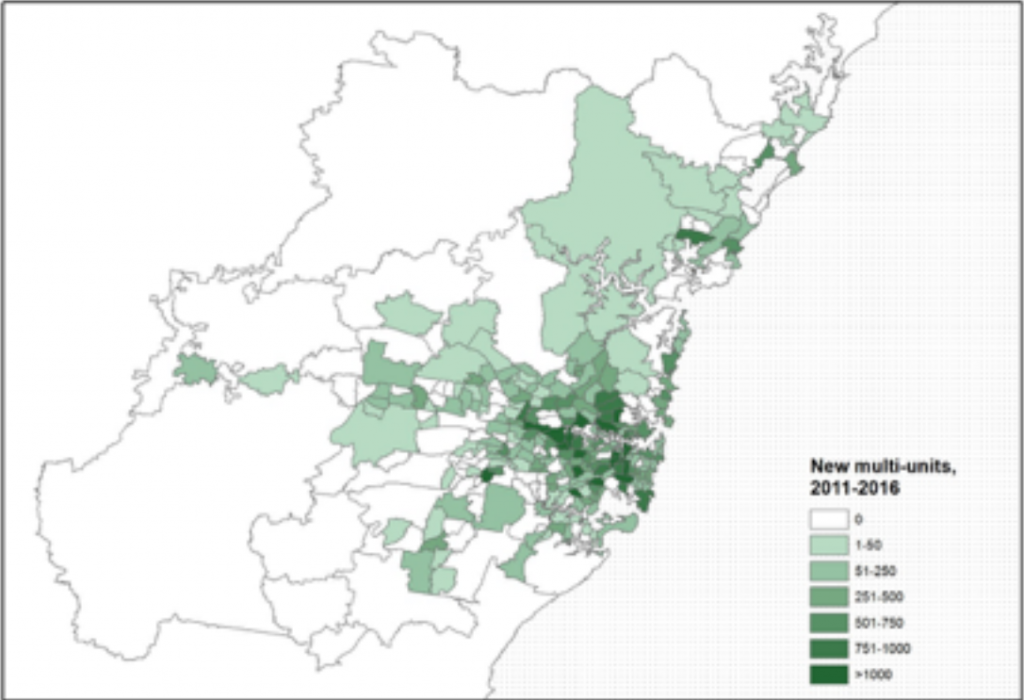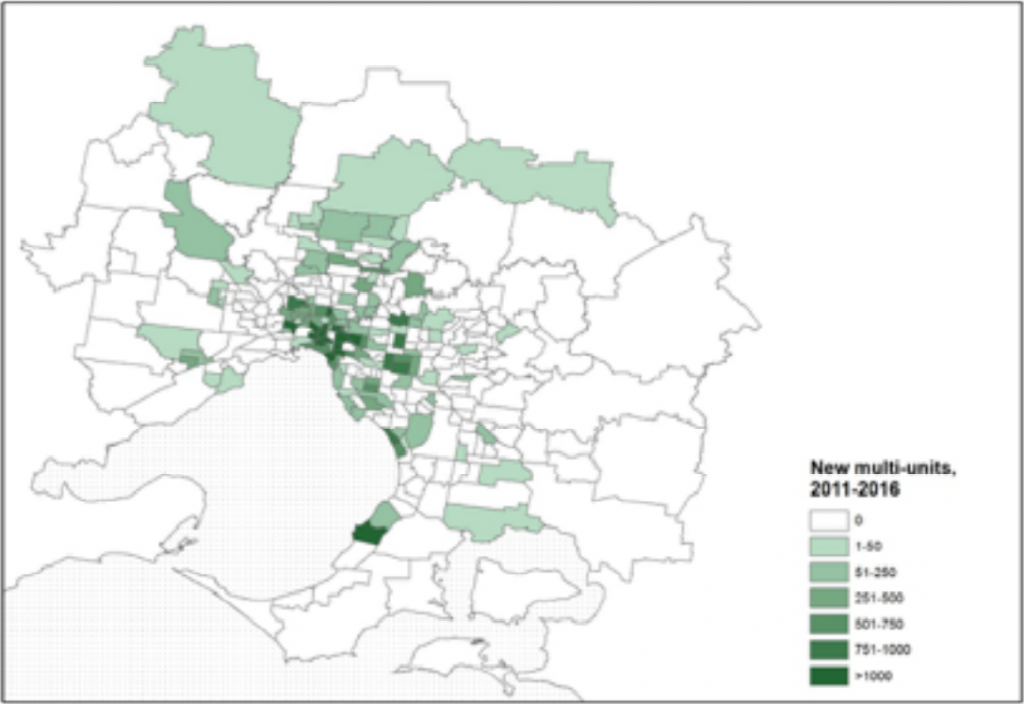Housing and the Gig Economy
Over the past 30 years our lives at work have been changing radically, just as our housing system has been changing too. In both cases stability and predictability are giving way to flexibility – and that has generally meant less security and, increasingly, greater inequality. These changes are not a coincidence, both are driven by the same macroeconomic emphasis on deregulation; and increasingly insecurities at work are reinforcing problems in our housing system. In Australia, the link between employment and housing is particularly important. For much of the twentieth century we had a unique approach to jobs and housing that focused on what we might call pre-distribution rather than re-distribution. By regulating financial and labour markets Australia gave households more equitable access to jobs and housing without as much need for government spending.
In housing strong regulation of banks (including public ownership of banks), land release policies and preferential policies for home buyers all contributed to a high rate of home ownership (the most secure form of tenure) and low rate of private renting (the least secure). In employment, a formal commitment to full employment and centralized wage fixing gave workers, especially those with less bargaining power, a bigger say. In both areas, most of those policies have been dismantled.
The last 30 years have seen a dramatic increase in ‘non-standard’ forms of employment. This includes part-time jobs, and casual and contract employment. There are some real advantages to these changes for many – they allow workers to combine work and other commitments (like caring for family), and can mean more control over the work we do. But there is growing evidence that for many these changes just mean less security and less bargaining power.
The days of full employment have long since gone. Australia’s unemployment rate barely rose above two per cent for the three decades following WWII, it has barely fallen below five per cent since. Underemployment is also on the rise; more and more of those with a job want more hours than they are offered. And because jobs are more ‘flexible’, they are also less stable, meaning we often cannot be sure if we will still have a job in six months’ time. When you combine these trends with falling union membership it is hardly surprising that wages are barely growing, despite steady economic growth. Flat wage growth is now one of the major drivers of rising inequality.
We are now witnessing an increase in the ‘gig economy’, where workers are employed on a very short term basis. The typical examples are the rise of Uber to replace taxi drivers, and of Airtasker to source all sorts of jobs from ‘handy person’ work to editing and graphic design. A similar trend has emerged in housing as well – through AirBnB. Because all of these examples use the internet to change the way we do things, the gig economy is often linked to debates around automation, and the potential for automation to significantly reduce the number of jobs.
The gig economy and automation, however, are distinct trends. As Jim Stanford from the Centre for Future Work has argued, in most gig jobs new technology plays a relatively minor role, focused largely on connecting buyers and sellers. The handy person does much the same thing they did before. The Uber driver still drives a car to pick you up and drop you off. The service itself is almost identical – what has changed is the way we connect workers and consumers. This is quite different to changes in manufacturing, where the nature of the work itself has changed dramatically as computers and robots replace people.
So why are gig jobs growing so quickly if they involve so little change? One explanation is that these online platforms circumvent the rules we have developed to regulate labour and housing markets. Airtasker workers and Uber drivers are legally independent contractors (although this is increasingly being challenged). They pay all their own overheads and have to manage all their own cash flow. If you are only doing this on the side for a bit of spare cash, that’s fine, but if it replaces more stable jobs, then it is a problem.
So what does all this have to do with housing? Well it is driving some of the growing inequalities and insecurities we see in the housing market. As more and more people work in less stable jobs – either on short-term contracts, or as casuals or in the ‘gig’ economy – so they can find it harder to access stable housing. First, without a stable job it is difficult to get a mortgage, which means you cannot buy a house. Australia now has one of the highest household debt to GDP ratios in the world, driven almost entirely by mortgage debt. And unlike most other similar countries, debt is still rising after the financial crisis. Expensive housing and high debt make insecure work a much bigger problem.
Insecure work is just as much a problem for renters. If your income fluctuates every week then you are forced to manage your finances much more actively to ensure you can cover the rent in periods where you have fewer hours or no work. Low paid and underemployed workers are more likely to have insecure forms of employment, and also have less of a financial buffer when things get tight. It is not surprising this leads to a growing number of people scarifying essentials to pay the rent. The new world of insecure employment is also creating problems for the other policies we have to help those in need. Many government payments are highly targeted – meaning only those on low incomes get help, and that support is withdrawn as you start to earn income. This creates two big problems. Often working an extra shift leaves you with not much extra cash, because benefits are withdrawn at much higher rates than apply for taxation. Second, it can be hard to predict what you will earn, and government systems are often slow in responding. This can mean you lose benefits based on previous earnings just as you lose shifts – leaving you with no money, or even a debt.
For those in social housing, the problems are potentially even worse. Because governments have invested so little in social housing, while the demand for social housing has been growing, access is now very tightly targeted. Indeed, the main way governments have used to ‘reduce’ public housing waiting lists has been to make it harder to get on the list, not to provide more housing. As a consequence, only those on very low incomes generally qualify. If you are in social housing and you start to earn more, then you risk losing your home.
The strong eligibility rules are less important in a world of stable full-time jobs. If you get a new full-time job it will pay a reasonable wage and you know it will be fairly stable, so you can afford to move into other forms of housing. But in the new world of insecure work you might get a good contract and then find yourself without enough income soon after. If you lose your house in the process – forcing you into a much more expensive and less secure private rental market – then that is a huge loss. So big a loss, in fact, that many tenants might avoid initially taking work (especially if it is short-term, casual or contract). Ideally, those small ‘gigs’ would give people experience and connections to get more work. But our social housing system is not designed for the new world of work.
The problems of integrating ‘targeted’ social housing and insecure work are so bad that governments have been forced to try new things. One of the reasons for new models of housing for key workers is precisely this problem. The state government has been exploring other options too – it knows it is a problem – but the whole structure of housing provision is so deeply based on targeting it often ends up making things worse.
None of this is to argue that we can or should return to the pre-reform days of the 1960s. But the combination of changes in employment and housing are proving unfair and unsustainable. A gig economy of short term contracts might be feasible if people were guaranteed secure and affordable housing as a right. Strong targeting of social housing can make sense in a world of secure full time jobs. Taken together, however, insecure employment reinforces the worst aspects of our expensive and insecure housing system. For now, the fight for more secure work and a fairer housing system are bound together.







